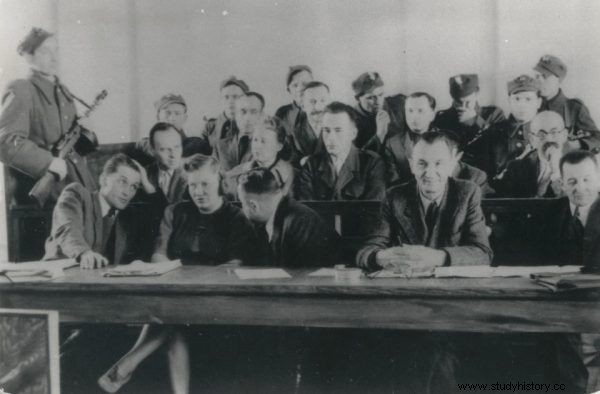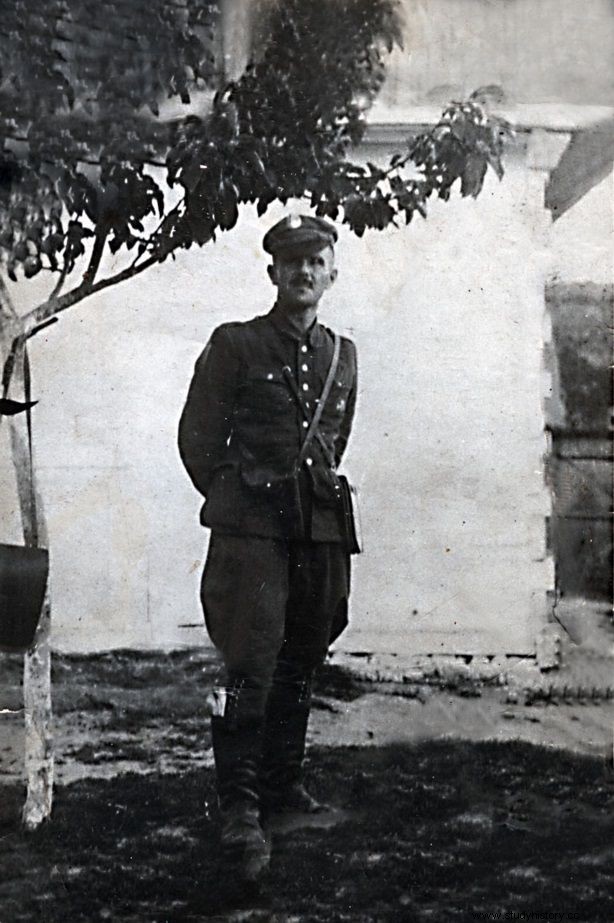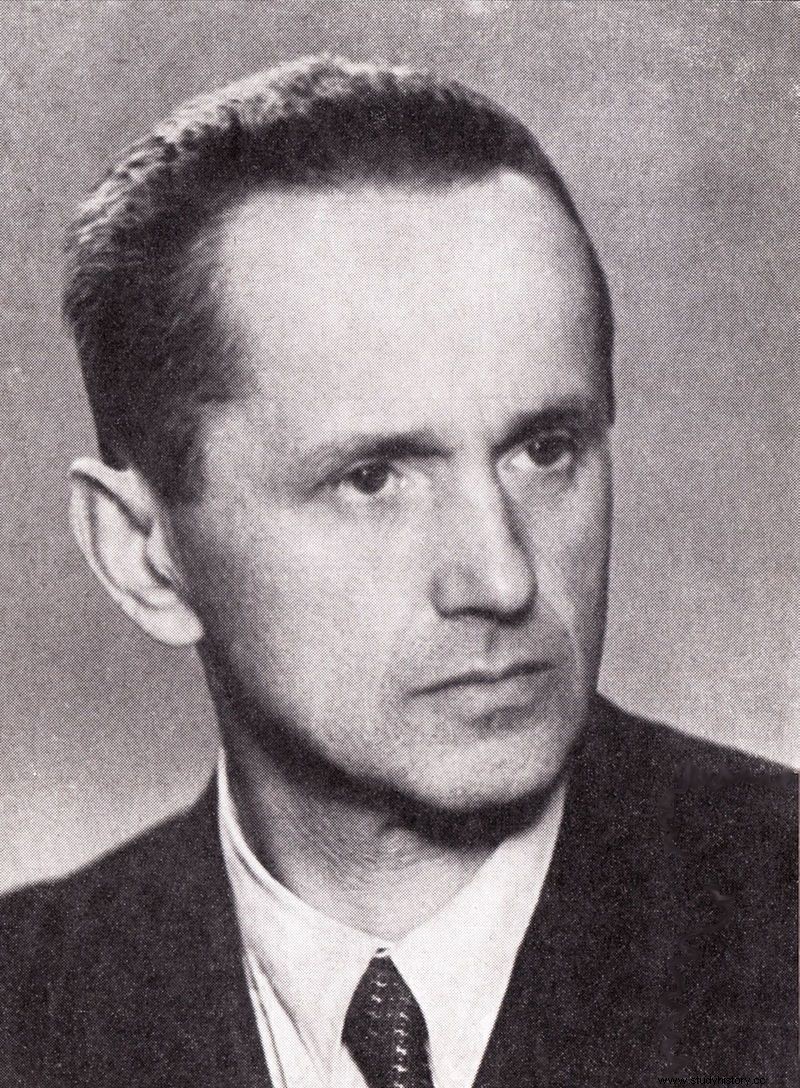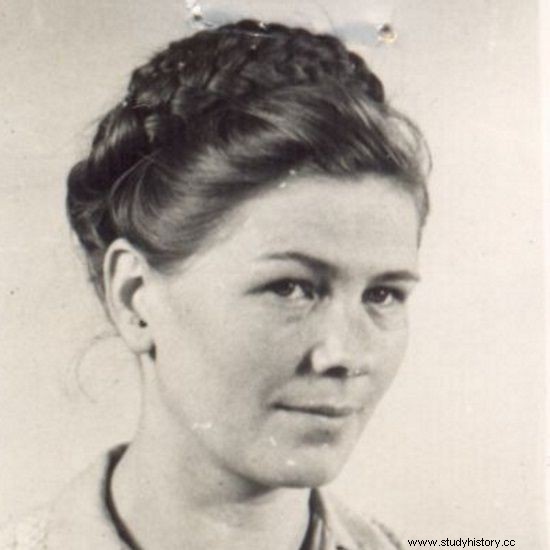Burning, pulling hair and nails, crushing genitals and fingers, wounds inflicted on everything that can be handled. Although it sounds like scenes from a horror movie, this is how the realities of the former Home Army lived in post-war Poland
People's authorities called them bandits and gave them hell after the war. Major Wiktor Herer, head of the investigative department at the Ministry of Public Security, in 1948 said of the cursed soldiers:"Our task is not only to destroy you physically, but we must destroy you morally in the eyes of society." Under the guise of "struggle to consolidate the people's power", the last defenders of independent Poland were getting rid of.
For members of the Home Army, liberation from German occupation did not mean freedom - recalled Maksymilian Jarosz, a partisan of the Home Army, Righteous Among the Nations. - We quickly learned that the Red Army disarms the Home Army soldiers and sends them to the mobilization centers of the Polish Army. Some of them were interned in the Majdanek camp. Many NKVD deported to the USSR or murdered on the spot. Akowcy did not know what to do . Those who did not die with weapons in their hands were imprisoned and tortured for months, and then - in show trials - to hear the death sentence.
Tens of thousands of people died in prisons, pre-trial detention centers and labor camps during the times of Stalinist terror. Some of them did not survive the harsh conditions, others were tormented by brutal interrogations. The torturers turned the lives of their victims into hell. After the announcement of the sentence sentenced to three times the death penalty, Witold Pilecki, tortured for months, said:“I cannot live anymore (...), I was finished. Because Oświęcim was a game. " He was extremely emaciated for the execution - both collarbones and ribs were broken, his cervical vertebrae were damaged and his nails torn off.
I never hit anyone
The historian Ryszard Terlecki in the book Miecz i shield komunizmu, devoted to the history of the security service, emphasizes that at the beginning, during the war, the torture used by the security services was not too sophisticated:until death ”.

The dock of defendants in the trial of Witold Pilecki. Pilecki was one of the victims of the UB (photo:public domain).
The first task that a new officer had to fulfill when entering the service in the security service was to become resistant to the quite brutal views of the tortured, and then to train in the so-called "hard" beating. This career path was followed by the later director of the Investigation Department (IV) of the Ministry of Public Security, Józef Różański, who was persuaded to take up service in the Ministry of Security by a friend. He quickly became famous as one of the cruelest UB executioners, although he wrote about his beginnings:
When I started working at UB, the investigative section already existed. (…) Until I was referred for an investigation, I never hit anyone, never thought about hitting anyone. I found hundreds of people arrested, as was the case in the first period, with no evidence whatsoever. This is where I encountered beating for the first time. I was beaten by old comrades and new comrades who had come before me .
The Minister of Public Security, Stanisław Radkiewicz, said years later that it was Różański who introduced in his investigative unit the method of mistreating the arrested and that "he personally committed a number of acts proving degeneration and sadism". One of Różański's victims was Stanisław Kasznica, the last chief commander of the NSZ. His sister Eleonora saw the effects of the secret police's methods of interrogating prisoners:
My brother had bruises on his face from being beaten and patches on his head from hair that had been torn out. His hands were fine now, but they were tearing off his fingernails. He said that in winter he was kept in a cell with water up to his knees, his teeth were knocked out .
Until you passed out
Torture was a regular feature on the interrogation agenda. The arrested soldiers of the cursed torturers were beating and kicking, and when it did not work, they used rubber truncheons, rifle butts, belts with metal buckles or whips. They pulled out nails, knocked out teeth, burned, electrocuted. They starved prisoners, kept them in cold cells, forced them to stand or kneel for many hours, deprived them of sleep . They tortured them both physically and mentally.
After such treatment, Hieronim Dekutowski pseud. "Zapora", Cichociemny, head of the Kedyw Inspectorate of the Lublin-Puławy AK, resembled an old man standing over the grave at the age of 30. Hunched and gray, no teeth or fingernails, broken hands, ribs, and nose. The investigation into his case lasted from September 19, 1947 to June 1, 1948, and all the time he was harassed by security service oppressors:
An investigator asked to write a resume first, then asked questions. When the prisoner fell silent, he struck his jaw, which made the prisoner lean against the wall. He continued to hit his entire body blindly, which the prisoner was passively defending with his fists. Pain in my head, everything was spinning around. After torture, nose bleeds. But this is not the end. When that didn't help, the prisoner kicked in the shinbone. (…)
Beating again with a rubber toe with a metal tip in the heel - it irritated the brain. And when nothing helped, then, at the request of the investigator, security officers armed with sticks stormed in. They knocked the prisoner to the floor, beating, trampled until he passed out .

Hieronim Dekutowski (photo:public domain)
Stanisław Maślanka ps. "Legend", a Home Army member and activist of the anti-communist underground within WiN, i.e. the Polish civil-military anti-communist organization, recalled over six years in a security service prison:
I got nothing to eat for a week and was questioned day and night over and over again. They beat me with whatever it was. What the interrogator had at hand - a punch, a ruler, an open hand. When I fell off the stool that the UB inherited from the Gestapo in Łódź, the UB was kicking me with his leg. What saved me was that I was allowed to go to the toilet at night, where I drank a lot of water. Otherwise I wouldn't have survived .
During his stay in the execution room of the Security Office, Buttermilk fell ill with tuberculosis of the lungs and bones. He was lying in a prison hospital in a cell without glass in winter with 25 degrees frost. "You could see the frost on the walls," he said years later. His hand was almost amputated. Years later, the investigative methods of the UB were also described by another former Home Army soldier, who fought in the "Zośka" Battalion, Stanisław Krupa:

Kazimierz Moczarski (photo:public domain)
When my tormentors found the beating no longer affected me, they resorted to a different method. My hands and feet were tied and put on a hook, so that my back was against the wall, and my stretched, tied legs were leaned against a stool. God, what a horrible torture it is! The entire weight of the body rests on a centimeter-thick tip, driven into the wall and bent - at a distance and at right angles - on an iron hook. In addition, they seat you so that you lean on your tailbone. Even slight movement causes the hook to dig into the rectum. How many times have I passed out during this operation ...
Zero reduced fare
Kazimierz Moczarski, head of the Information and Propaganda Bureau of the Home Army Headquarters, imprisoned in the Mokotów prison, survived as many as 49 types of torture, which he meticulously listed in a letter to the Supreme Prosecutor's Office of the Polish Army in Warsaw of February 24, 1955. He was beaten "anywhere" with a wire, a whip or a rubber truncheon, among others.
Most often he was hit in sensitive places, such as the chin, heels, fingers or the bridge of the nose. His nails and hair were torn out from various parts of his body, burned, stabbed, and his fingers were crushed. Anastasia Rączka, the wife of senior sergeant Władysław Grudziński "Pilot", a soldier from Mieczysław Dziemieszkiewicz "Roja" unit, was also subjected to the latter torture:
The bully walked over, took her tiny hand with an iron hand and pressed something metal to her fingers . The excruciating pain of the crushed pads made her howl like an animal.
- Enough for now.
The bully let go, but the pain of his injured fingers did not go away.

Anastazja Rączka, wife of senior sergeant Władysław Grudziński "Pilot", a soldier from Mieczysław Dziemieszkiewicz "Roja" unit (photo:press materials of the Znak Horyzont publishing house)
At that time pregnant, whom she hid in prison until the day of childbirth, beaten, starved and humiliated, Anastasia did not allow herself to be broken by the security service, neither by physical nor mental torture. When she was shown a picture of her husband's battered and stripped body, she passed out. Despite doubts that she would ever be free, she tried to survive for herself and her daughter Helenka.
She managed to save her child from the hell of a Stalinist prison and survive to tell the truth. The steadfastness and heroism of her and many other women who suffered at the hands of communists were appreciated after many years, when President Lech Kaczyński awarded them with the Knight's Cross of the Order of Polonia Restituta. Helena also received the posthumous medal for my father.
Can it be said today that the cursed soldiers lived to see justice? Unfortunately, after almost thirty years of free Poland, they are still waiting for her. Many communist criminals and torturers have still not been tried, many buried anywhere, the bodies of the doomed heroes have not been found. One can only hope that the homeland they fought for will not forget their sacrifice. As Władysław Grudziński wrote, in Ballad o Roju , found by the security service in his documents:"That God would give that, out of your hardships and sleepless nights, a great Poland, free from traitors and violence, might arise ..."
